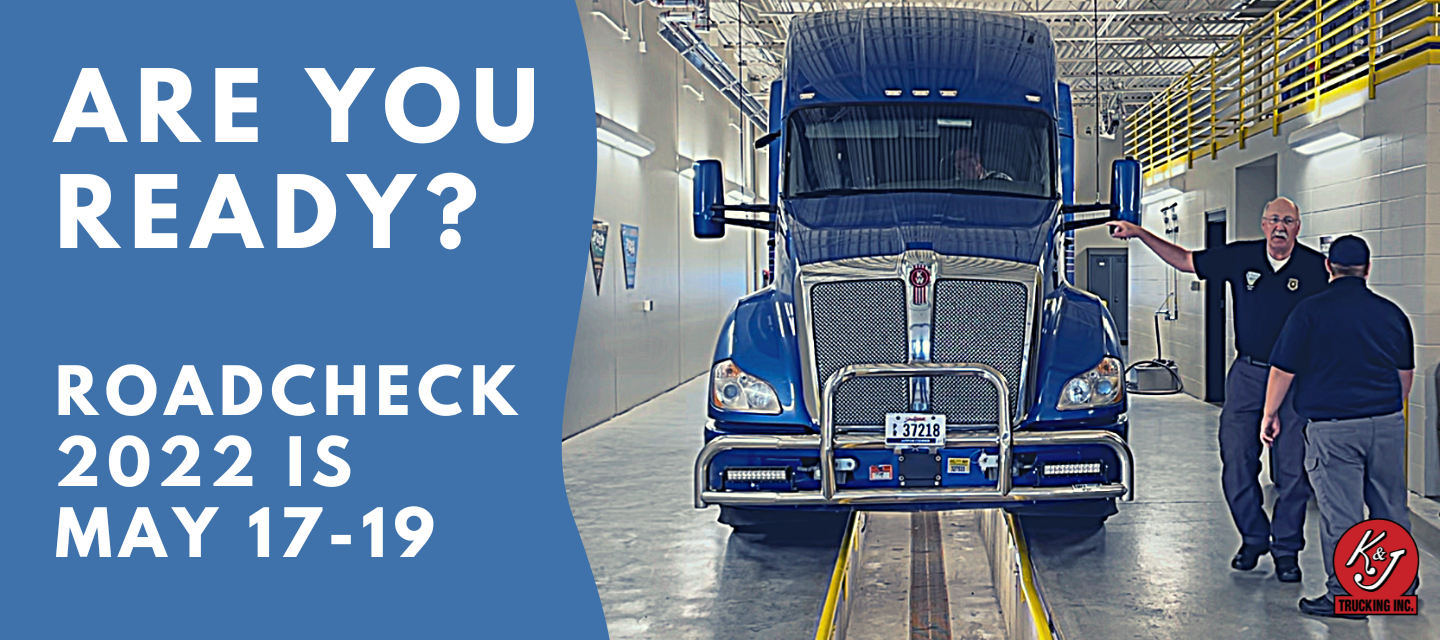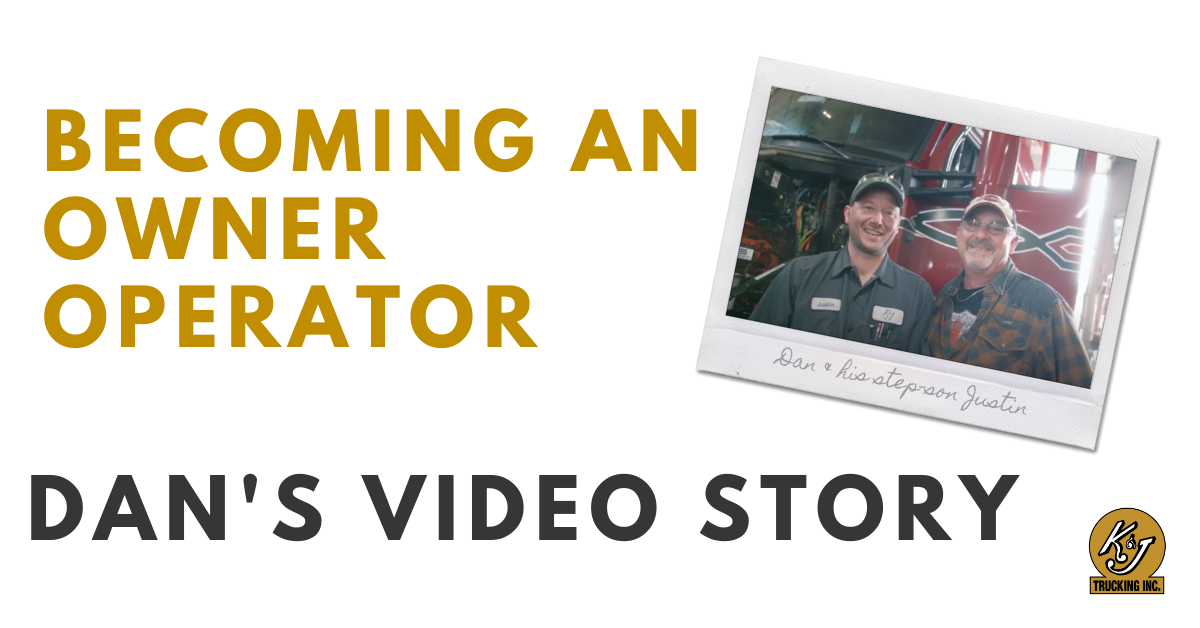Are You Ready? Roadcheck 2022 is May 17-19

Time to triple check your brakes! The Commercial Vehicle Safety Alliance (CVSA) has selected May 17-19, 2022 as the dates for International Roadcheck. This year, the focus will be on wheel ends (but make sure you don't slack on the rest either!).
If you aren't familiar with Roadcheck, it is a time where inspectors from the US, Canada, and Mexico conduct extra inspections on CMVs. The goal of the program is to keep unsafe CMVs and drivers off our roadways.
Why wheel ends?
Critical for braking, wheel end components maintain stability and control, supporting the heavy loads carried by CMVs. In addition, the results of Roadcheck 2021 showed brake systems as the #1 violation in North America. And as of mid-February 2022, various wheel end component violations are already showing up on the top 20 violations list.
Best case, identifying wheel end component problems before they cause downtime can save you time and money on emergency repairs. Worst case, a wheel end component failure may lead to a serious crash.
how DO I prepare for roadcheck?
Do your pre- and post-trip inspections! This the best way to help you identify and avoid any violations before you are flagged for Roadcheck. These inspections will help reduce general violations including lights going out, chafing air lines, and low tire air pressure.
Given the added focus on wheel end components, drivers should pay special attention to the following:
- abnormal or uneven tire wear
- smoking or extremely hot hubcaps
- smoking wheel end
- wheel vibration, wobble, or noise
- increased stopping distance
- decreased braking power
- abnormal side pull when braking
- wheel lock-up
- skidding
Double check that you have the correct paperwork, either physical or electronic copies, and that it’s easily accessible during an inspection. If you notice something is missing now you have time to get it replaced.
Important paperwork includes:
- truck and trailer registration
- fuel permits
- insurance cards
- annual inspection stickers for both truck and trailer
- instructions for the ELD
Obey the laws! Wear your seat belt, don’t speed, fully stop at lights and stop signs, and use the left lane for passing. If you have a restriction, make sure you have the appropriate supplies. If you wear glasses, make sure you have them on. If you use hearing aids, make sure you have spare batteries. And stay off your cell phone!
Keep a safety mindset and don’t get too comfortable - it can be easy to overlook things when you do. And did we mention, stay off your cell phone?!
how do I know if I have been selected?
Inspections will be performed at weight and inspection stations, on roving patrols, and at temporary inspection sites.
If you have a PrePass system in your truck and you are coming up on a scale, follow the red or green light as you normally would. But beware, not all checkpoints are set up at scales.
Pay extra attention when you come up on a mobile checkpoint. While some of them may be set up to use PrePass, many will not. Follow the direction of signs in the area and be courteous of other drivers.
Whatever you do, don't avoid these inspections! There are hefty fines associated with trying to avoid or bypass inspection checkpoints.
what will happen during an inspection?
Inspectors will typically conduct the Level One Inspection. This 37-step general inspection includes a wholesale examination of driver operating requirements and vehicle mechanical fitness. These inspections will be most likely performed at weigh stations. If you pass a Level One inspection, you receive a CVSA sticker that exempts you from another Level One inspection for three months.
This year, with the increased focus on wheel end components, an officer will crawl underneath the cab to look at the slack adjusters and the inside of the brake drums. They will be paying extra attention to:
- cracks or unseated locking rings, studs or clamps
- bent, cracked or broken rims on the inside and outside wheel rims
- loose, broken, missing or damaged wheel fasteners and elongated stud holes
- spoke wheels for cracks across spokes and in the web area or slippage in the clamp areas
- hub lubricant leaks, missing caps, or plugs
- inner wheel seal leaks
- tire and valve stem leaks
- proper inflation, cuts and bulges on all tires (including the inside tire on a dual set)
- regrooved tires on steering axle
- tread wear (will measure major tread groove depth)
- the sidewall for improper repairs, such as tire plugs
- exposed fabric or cord
- tire contact with any part of the vehicle
- markings on the tire that would exclude its use on a steering axle
- debris between the tires
- tires touching one another or any part of the vehicle
If you find yourself pulled over on the shoulder of a freeway for an exam, you may receive a Level Two Inspection since it will be unsafe to crawl underneath the truck. In this situation, an officer will walk around the truck, look at the equipment, inspect the driver’s license and logbooks, etc.
Other exam scenarios include Inspections at the terminal without the driver present or electronically and wirelessly while the vehicle is in motion.
Additional information on CVSA inspections and their requirements can be found here.
how to act during an inspection
Be professional, kind, and courteous. Officers are just regular people wearing uniforms. If you treat them well, it will go much better for you.
If you feel you are being written a ticket unfairly, do not be confrontational. The company you work with can and will appeal the result if necessary. Calmly ask for clarification on any violations so you can explain them to your company's safety personnel correctly and with full understanding.
safety is the goal
“We want every vehicle on our roadways to be in proper working order for the safety of the driver operating that vehicle and everyone traveling on our roadways,” said CVSA President Capt. John Broers with the South Dakota Highway Patrol.
Let’s all work together to ensure the safety of our drivers, our trucks, and everyone else who shares our roads.
Are you ready to take the next step and become an owner operator? We have a thriving program at K&J, learn more below and watch a video interview!

